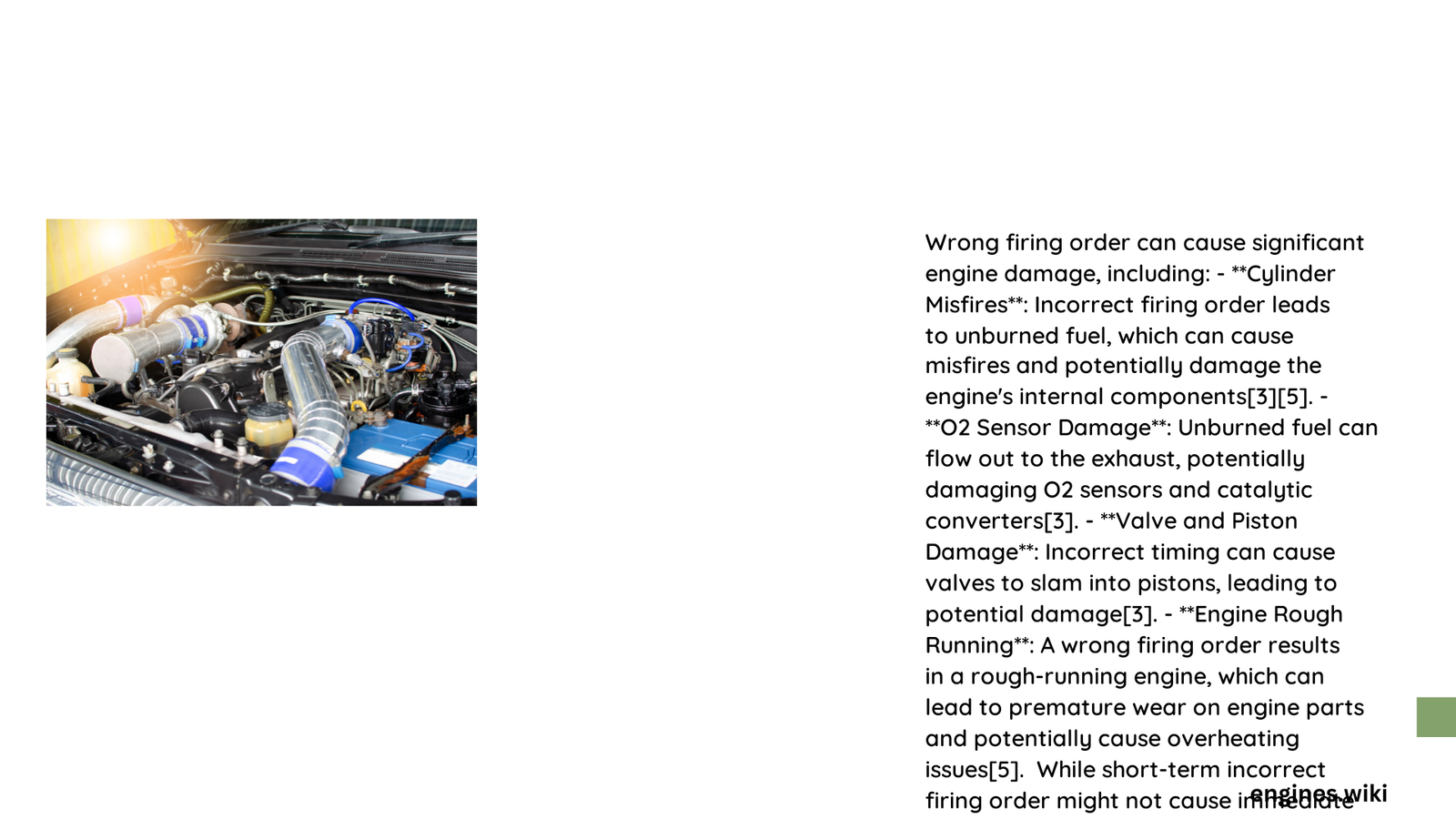Will Wrong Firing Order Damage Engine: A Detailed Exploration
Quick Overview
Vehicle engines operate with precise mechanical synchronization, and disrupting the firing order can lead to significant performance complications. While immediate catastrophic damage might not occur, prolonged operation with an incorrect firing sequence can potentially compromise engine integrity, causing gradual wear, reduced efficiency, and potential long-term mechanical stress.
What Happens When Firing Order Is Incorrect?
Can Wrong Firing Order Cause Immediate Engine Failure?
Most automotive experts agree that an incorrect firing order typically does not cause immediate engine destruction. However, the consequences can be nuanced and potentially damaging over extended periods:
- Performance Degradation
- Uneven power distribution
- Reduced engine efficiency
-
Increased mechanical stress
-
Potential Component Strain
- Accelerated wear on spark plugs
- Potential damage to piston rings
- Increased cylinder wall friction
How Does Incorrect Firing Sequence Impact Engine Components?
| Component | Potential Impact | Risk Level |
|---|---|---|
| Spark Plugs | Premature wear | Moderate |
| Piston Rings | Increased friction | High |
| Cylinder Walls | Accelerated deterioration | Moderate |
| Crankshaft | Unbalanced rotational forces | Low |
Symptoms of Incorrect Firing Order
Recognizing the signs of an incorrect firing order is crucial for preventing potential long-term damage:
- Rough engine idling
- Noticeable power loss
- Increased fuel consumption
- Unusual engine vibrations
- Intermittent misfires
Factors Influencing Potential Damage
Does Engine Type Matter?
Different engine configurations respond differently to firing order variations:
- V6 Engines: More sensitive to firing sequence disruptions
- Inline-4 Engines: Generally more tolerant
- V8 Engines: Complex timing requirements increase risk
Recommended Actions
- Immediate Steps
- Stop driving if significant performance issues emerge
- Consult professional mechanic
-
Verify and correct firing order configuration
-
Diagnostic Procedures
- Use advanced diagnostic tools
- Check spark plug wire connections
- Verify distributor cap alignment
Long-Term Consequences
While catastrophic failure is unlikely, prolonged operation with incorrect firing order can:
- Reduce engine lifespan by 10-15%
- Increase maintenance costs
- Compromise overall vehicle performance
Prevention Strategies
- Regular professional engine inspections
- Accurate maintenance records
- Use manufacturer-recommended firing order specifications
Expert Recommendations
Automotive engineers unanimously suggest:
– Never ignore persistent engine performance issues
– Address firing order discrepancies immediately
– Prioritize professional diagnostic assessment
Conclusion
An incorrect firing order does not guarantee instant engine destruction but represents a significant risk to long-term mechanical health. Proactive maintenance and swift corrective action are paramount.
Technical Insights
The complexity of engine dynamics means that while immediate damage is unlikely, cumulative stress can progressively compromise engine integrity. Professional assessment remains the most reliable approach.

